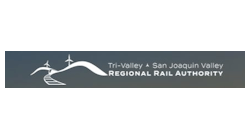San Joaquin Valley Regional Rail Authority Adopts Preferred Alternative to Connect ACE to BART
At their July 25 meeting, the Board of Directors of the Tri-Valley – San Joaquin Valley Regional Rail Authority voted to adopt a preferred alternative to deliver new rail service connecting ACE to BART. The action means that the project will now undergo a feasibility study and environmental review, which is scheduled to be completed by July 2019.
Alameda County Supervisor and Rail Authority Chair Scott Haggerty remarked that the Board’s adoption of a preferred alternative as well as other Board actions adopting a 12 month work program and initiating the environmental review process represented “a very important milestone that will keep us on a trajectory toward groundbreaking. I want to thank each and every member of our Authority Board and their staffs for their commitment to delivering a project that is fast, cost-effective and responsive to the goals and objectives of the communities it will serve.”
The preferred alternative includes a proposed phased implementation of service and specifies the preferred alignment, station locations, service characteristics and vehicle technology. Phase 1 of the new rail service, which has been named “Valley Link” by the Rail Authority Board, would connect the existing Dublin/Pleasanton BART Station to the proposed ACE North Lathrop Station. A second phase would extend service from the North Lathrop Station to the ACE and Amtrak Stockton Station.
Other proposed station locations include: Isabel Station; Greenville ACE Intermodal Station; Mountain House Station; Downtown Tracy Station; and River Islands Station. The service is proposed to operate from 5 am to 8 pm, with service every 12 minutes between the Dublin/Pleasanton BART Station and Greenville Road during peak hours and every 24 minutes beyond Greenville to the North Lathrop Station. Trains would be scheduled to allow for convenient transfers to BART.
Tracy Mayor Pro Tem Veronica Vargas, who serves as the Regional Rail Authority’s vice chair, said “Today, policy members from both sides of the Altamont Pass unanimously agreed to move forward with this preferred project scope. Now comes the important work of completing a feasibility study and environmental work in a nine month time frame. Although this schedule is going to be challenging, it speaks to the importance of getting this project delivered as soon as possible for our constituents.”
Over the next nine months, the Rail Authority Board will be reviewing project funding and delivery, management and operations of the proposed service as well as station area plans and transit connectivity. Following the feasibility report and environmental review, final design and construction would commence. Project construction is expected to take between five and seven years, meaning that the first Valley Link trains could be placed in service as early as 2024.



